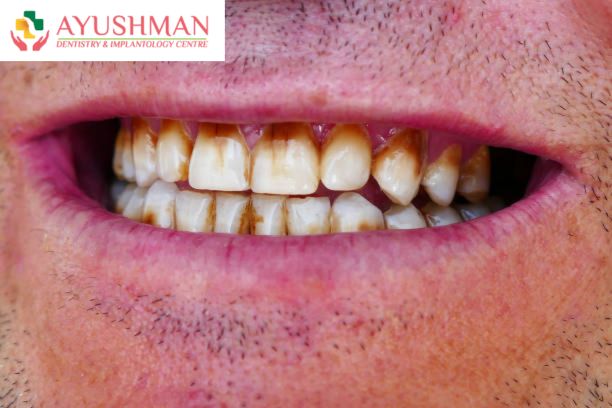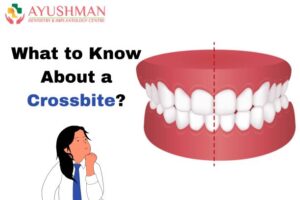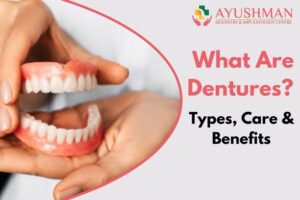6 Effects of Chewing Tobacco on Teeth

6 Effects of Chewing Tobacco on Teeth
When it comes to tobacco, many immediately think of cigarettes and the dangers associated with smoking. However, there’s another form of tobacco consumption that often flies under the radar but poses significant risks to oral health – chewing tobacco. Despite lacking the smoke of cigarettes, chewing tobacco is packed with harmful chemicals that can wreak havoc on your teeth and overall well-being. Let’s delve into the six effects of chewing tobacco on teeth and oral health.
Effects of Chewing Tobacco on Teeth
1. Stained Teeth & Bad Breath
The effects of chewing tobacco on teeth can lead to unsightly stains on your teeth and tongue, accompanied by persistent bad breath. The chemicals in chewing tobacco discolor the teeth and contribute to foul breath that is difficult to mask. Beyond the aesthetic concerns, these effects can significantly impact confidence and social interactions.
2. Dulled Sense of Taste and Smell
The harsh chemicals in tobacco don’t just affect your oral health; they can also interfere with your sense of taste and smell. Over time, regular use of chewing tobacco can diminish these sensory perceptions, diminishing the enjoyment of food and beverages. This loss can detract from the overall quality of life and affect one’s ability to experience the world around them fully.
3. Increased Tooth Decay
Sugar and other agents found in smokeless tobacco products wreak havoc on tooth enamel, making teeth more susceptible to decay and cavities. The combination of sugar and acidic compounds creates an environment conducive to bacterial growth, leading to accelerated tooth decay. Left unchecked, this can result in painful dental issues that require extensive treatment to rectify.
4. Slowed Healing After Surgery
Chewing tobacco contains irritating agents that hinder the body’s natural healing processes. Following dental procedures such as extractions or surgeries, tobacco users may experience delayed healing times and increased complications. This impediment to healing not only prolongs recovery but also heightens the risk of post-operative infections and other complications.
5. Gum Recession
The habit of placing chewing tobacco next to the gums causes constant irritation, leading to gum recession over time. As the gum tissue recedes, it exposes the roots of the teeth, making them more vulnerable to decay and sensitivity. Severe gum recession can also result in bone loss around the teeth, ultimately leading to tooth mobility and potential tooth loss.
6. Oral Cancer
Arguably the most severe consequence of chewing tobacco use is the heightened risk of oral cancer. With its plethora of cancer-causing agents, chewing tobacco exposes the delicate tissues of the mouth, including the gums, cheeks, lips, and throat, to harmful toxins. Additionally, the development of leukoplakia, a precancerous lesion characterized by white patches in the mouth, serves as a warning sign of potential malignancy. Left untreated, these lesions can progress to oral cancer, affecting vital structures such as the oral cavity, pharynx, larynx, and esophagus.
Conclusion
The effects of chewing tobacco on teeth and oral health are profound and far-reaching. From stained teeth and bad breath to the increased risk of oral cancer, the dangers associated with smokeless tobacco cannot be overstated. If you or someone you know is using chewing tobacco, it’s crucial to seek support and resources to quit this harmful habit. By prioritizing oral health and breaking free from tobacco dependence, individuals can safeguard their smiles and overall well-being for years to come. Remember, when it comes to tobacco, there’s no such thing as a harmless habit.









